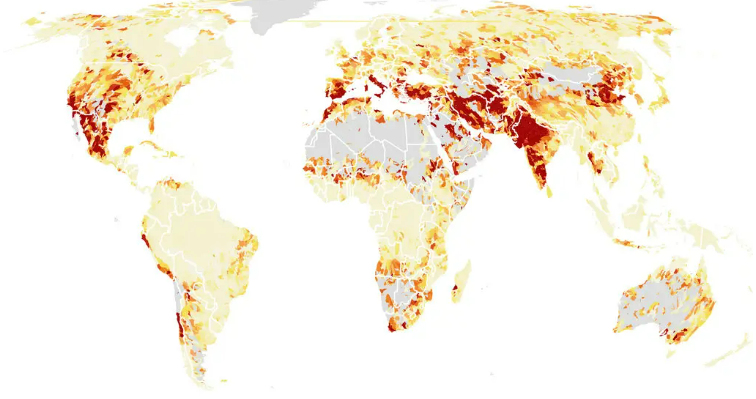我们通过发表论文来表彰学生 STEM 写作比赛的前 11 名获奖者。这是达纳·斯坦克(Dana Steinke)的作品。

The Motion of the Ocean: Using Sea Waves to Desalinate Seawater
One of the most famous divine punishments in Greek mythology is that faced by Tantalus, who was condemned to an eternity of hunger and thirst despite standing in a pool of water below a fruit tree. Humanity seems to be in a situation not too far from Tantalus’s: Although our planet’s surface is 71 percent water, nearly all of it is too salty to drink. According to the World Resources Institute, a quarter of the global population is at risk of running out of fresh water. While seawater desalination methods exist, they have largely been too expensive and energy intensive to be practical, especially in regions where both freshwater and reliable energy sources are in short supply. But what if we could use the ocean itself to power seawater desalination?
In Cape Verde, an island country off the coast of Senegal, water is more expensive than anywhere else in Africa. Despite being surrounded by ocean, Cape Verdeans are facing an extreme water shortage. Eighty-five percent of the country’s water is processed through diesel-powered desalination, which is both expensive and environmentally unfriendly. However, the situation may soon change. In collaboration with IMAR, the National Maritime Institute of Cape Verde, researchers from a company called Resolute Marine Energy are testing a new desalination process on the Cape Verdean island of São Vicente.
This novel technology, aptly called Wave2O, harnesses wave energy to power a reverse-osmosis desalination system. Complicated as it may sound, reverse osmosis desalination is simply a way of filtering water through a membrane that removes salt and other unwanted particles. Pushing the seawater through the membrane requires a significant amount of energy — a potential problem in a country with limited electrical grid capacity — but Wave2O bypasses this issue by converting energy from the sea.
Water moves with incredible force. It can wreck ships, wipe out entire villages, and even carve through land to form massive canyons. If you have ever been wiped out while surfing, you know how powerful ocean waves can be. Wave2O takes advantage of this natural and renewable power source through a multiple step process known as wave energy conversion. First, ocean waves move flaps attached to the sea floor. The motion of the flaps then powers hydraulic pumps, which send high-pressure seawater through a reverse-osmosis desalination system.
In addition to being less expensive than diesel-powered desalination, Wave2O is also far more sustainable. According to Olivier Ceberio, the co-founder of Resolute Marine, replacing Cape Verde’s diesel-driven desalination systems with Wave2O could lower carbon emissions — a key driver of climate change — by over 4,000 tons per year. Theoretically, Wave2O could even be used to generate electricity, thereby providing developing countries and other communities in need with both freshwater and a sustainable power source.
Depending on how well Wave2O performs in Cape Verde, Resolute Marine’s technology could be used to desalinate seawater in coastal areas all over the world, thus unlocking one of this watery planet’s most plentiful resources. Through scientific innovation, perhaps Tantalus can finally quench his thirst.
Works Cited
Frisch, Lucy. “Addressing Water Scarcity with Ocean Waves.” Spring Nature, 4 June 2020.
Hurley, Bill. “Create the Future: Water Desalination, Powered by Waves.” Tech Briefs, 4 Oct. 2019.
Sengupta, Somini, and Weiyi Cai. “A Quarter of Humanity Faces Looming Water Crises.” The New York Times, 6 Aug. 2019.